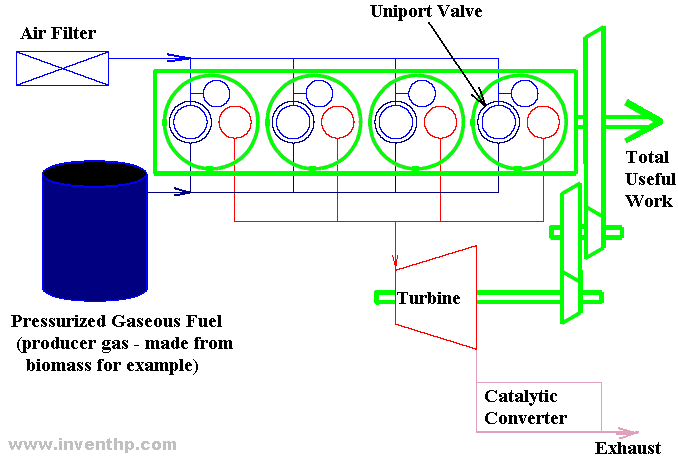As crude oil gets more expensive, research for engines that can use fuel made from biomass is on going. Some of these fuels are being made or collected today. Producer gas [other names or other similar fuels: town gas, coal gas, hygas, manufactured gas, syngas, SNG, woodgas, holzgas, air gas] (approximate molar analysis ~ 20% H2, 20% CO, 2% CH4, 42% N2, 8% CO2, 8% H20) is made from coal, wood or other organic materials in gasifiers. Biogas is formed in anaerobic digesters where microscopic organisms in the absence of air act on starches and other organic compounds to produce methane and carbon dioxide (approximate molar analysis 60% CH4, 30% CO2, 10% N2). The proposed stationary engine would burn one of these gases and would mechanically be much like the "Dual Pressure Intake Engine". But it would take advantage of the fuel's storage pressure to boost the engines power output. Such an engine could supply mechanical power for a farm or rural business. More likely it would power a generator to produce electricity for onsite needs and/or supply peak power to the electric grid (power which sometimes can be sold at a premium). It seems more sensible to use the biogas (or producer gas) to make valuable electricity in this fashion, especially if one can use the waste heat (CHP), rather than selling the raw gas cheaply to someone that needs to transport and then refine these gases to meet the standards for gaseous fuels. The below diagram and animation describe the operation of this 'Green' engine.
Diagram
of Biogas or Producer Gas Engine
(The engine could be SI or CI) 
|